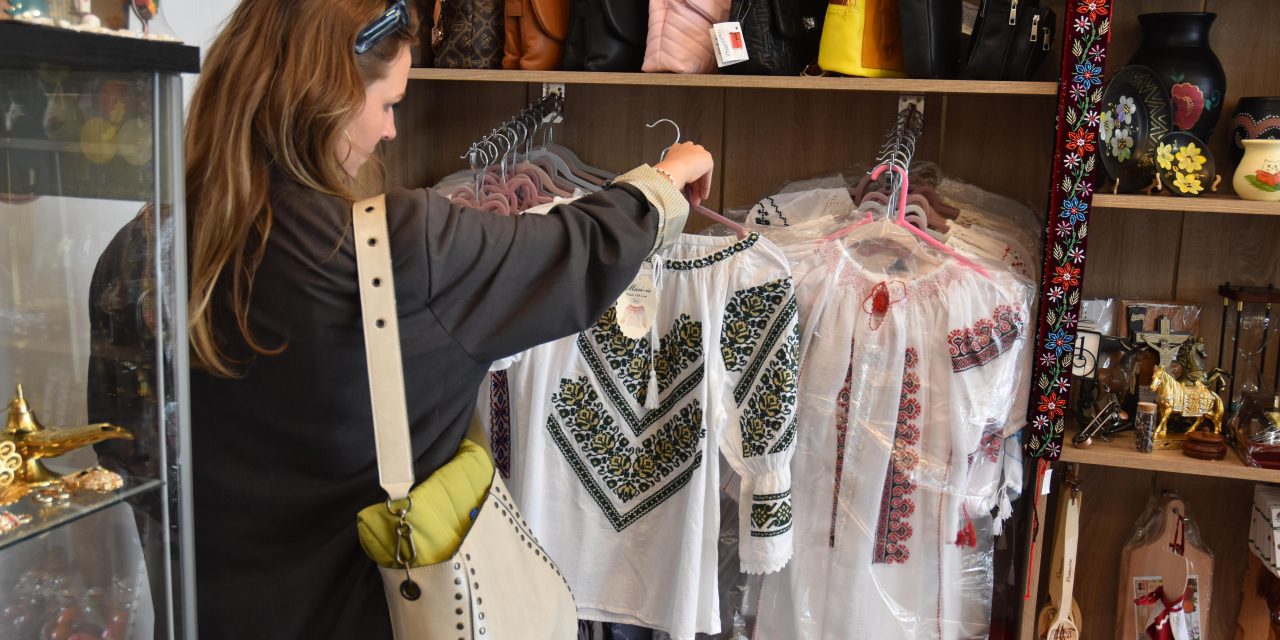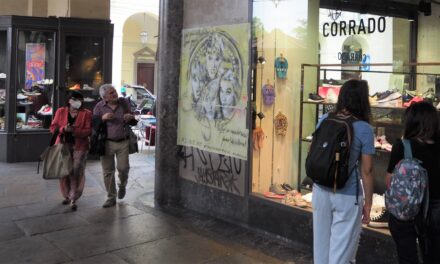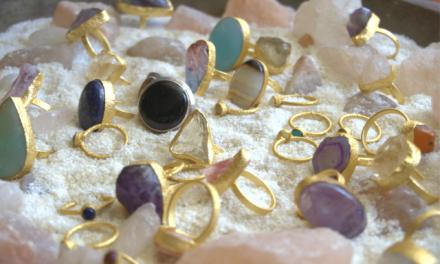ROMANIA – In the heart of Cluj-Napoca in Transylvania, the sound of Romanian folk music fills the air as young dancers perform a traditional Romanian dance. Hands are intertwined, legs are thrown high in the air and big white skirts start to look like big round flowers when the women swirl them around. Above the flowing skirts, the women wear an ‘‘ie’’, a traditional Romanian blouse. The detailed and complex embroidery patterns stand out on the white fabric of the blouses. The blouses are authentic and culturally seen as beautiful, but lately the Romanians have to share this opinion with the rest of the world.
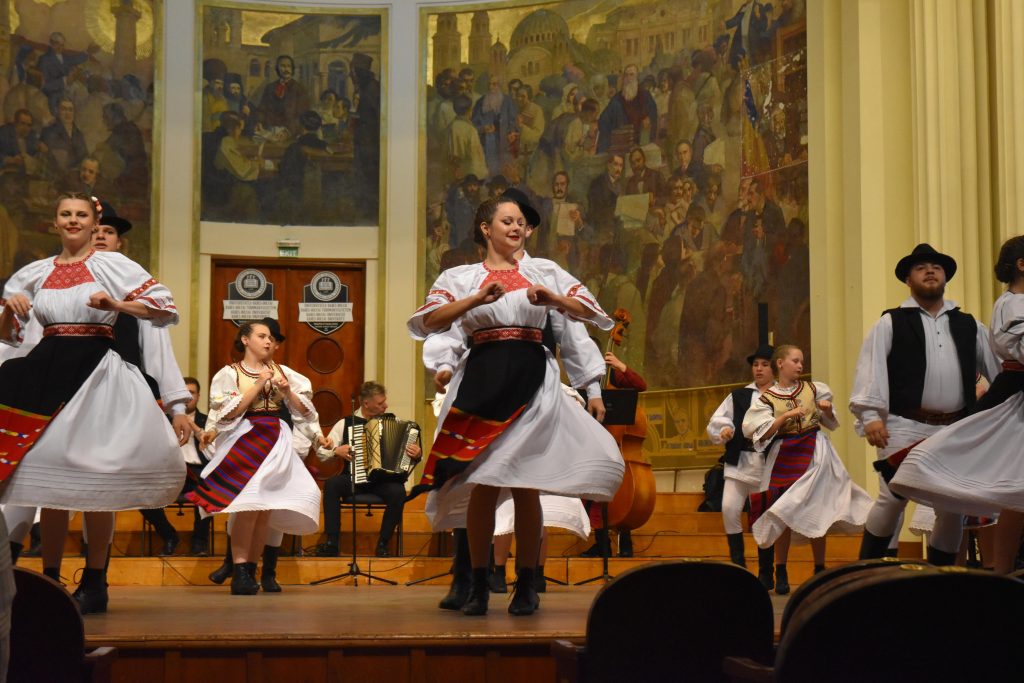
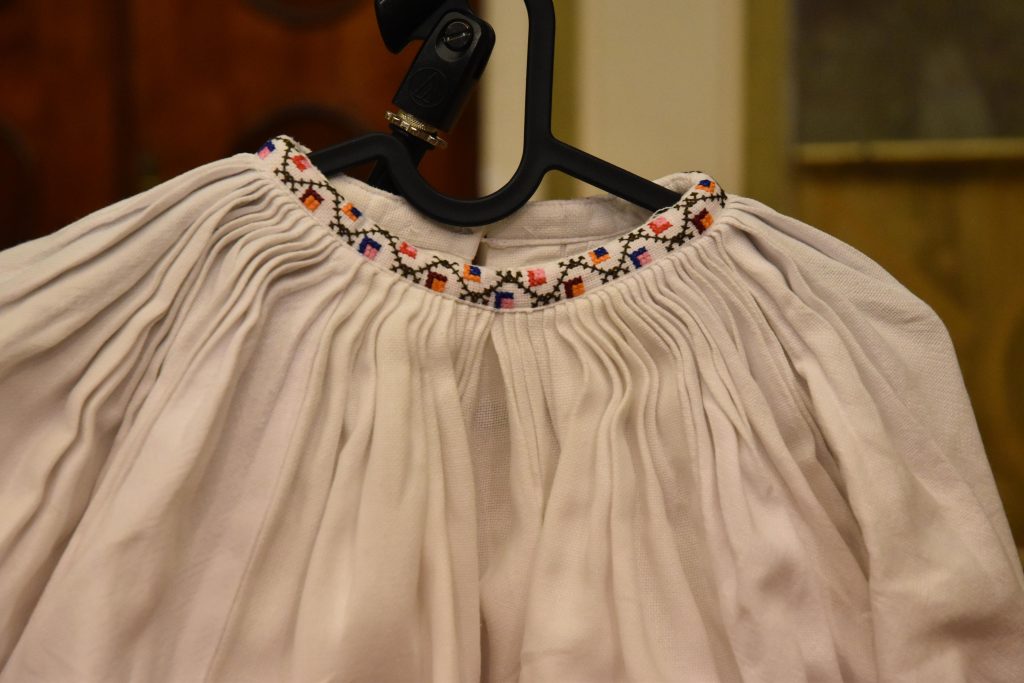
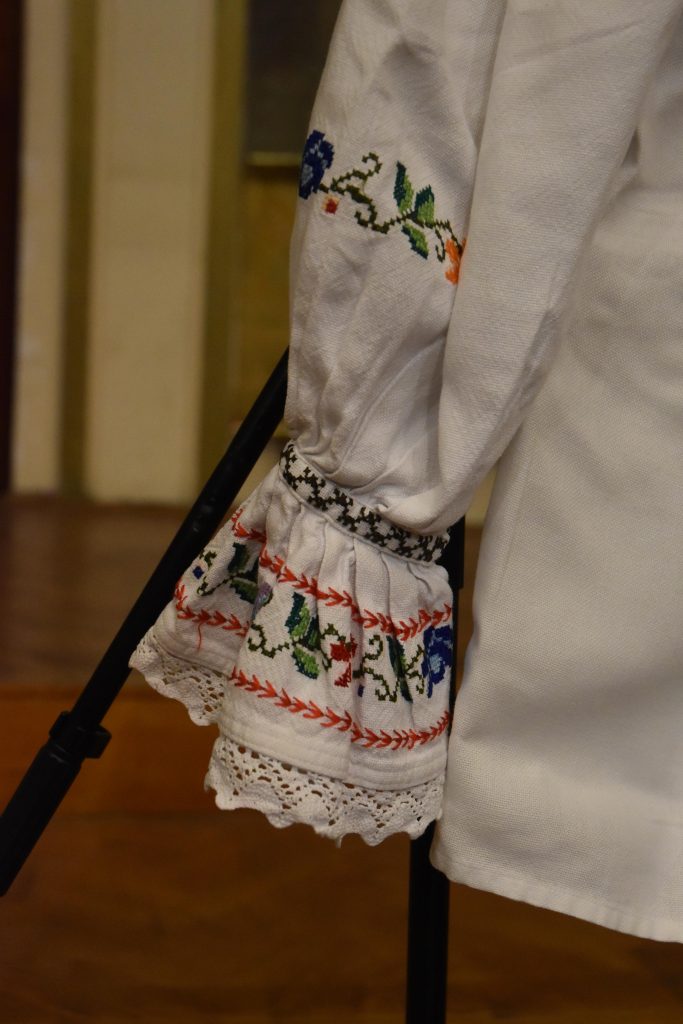

In this situation, the ‘‘ie’’ is worn in a traditional context, but the white embroidered garments can be spotted more and more often in the international streetscape. A development that doesn’t come without controversy, as the Romanians rise up to protect this valued and meaningful part of their cultural heritage. A debate is unlocked. A debate that returns often in different shapes and forms in society, but has the same clue: where is the line between cultural appropriation and inspiration?
Tradition to trend
It’s an age-old tradition, dating back thousands of years: women embroidering the Romanian peasant blouse by hand. The blouse is often made from white hemp with ruffles around the neck, with rich decoration around the neck, on the sleeves and around the hems.
Each region in Romania has its own distinctive colours and patterns. The decorations often have strong links with nature, referring to suns, rivers, wind and birds. The blouse can tell a lot about someone, their age, income and their home area. Younger girls traditionally wear more colourful blouses, for example, while black colours dominate the blouses of older women.
Click on the hotspots to learn more about specific areas!
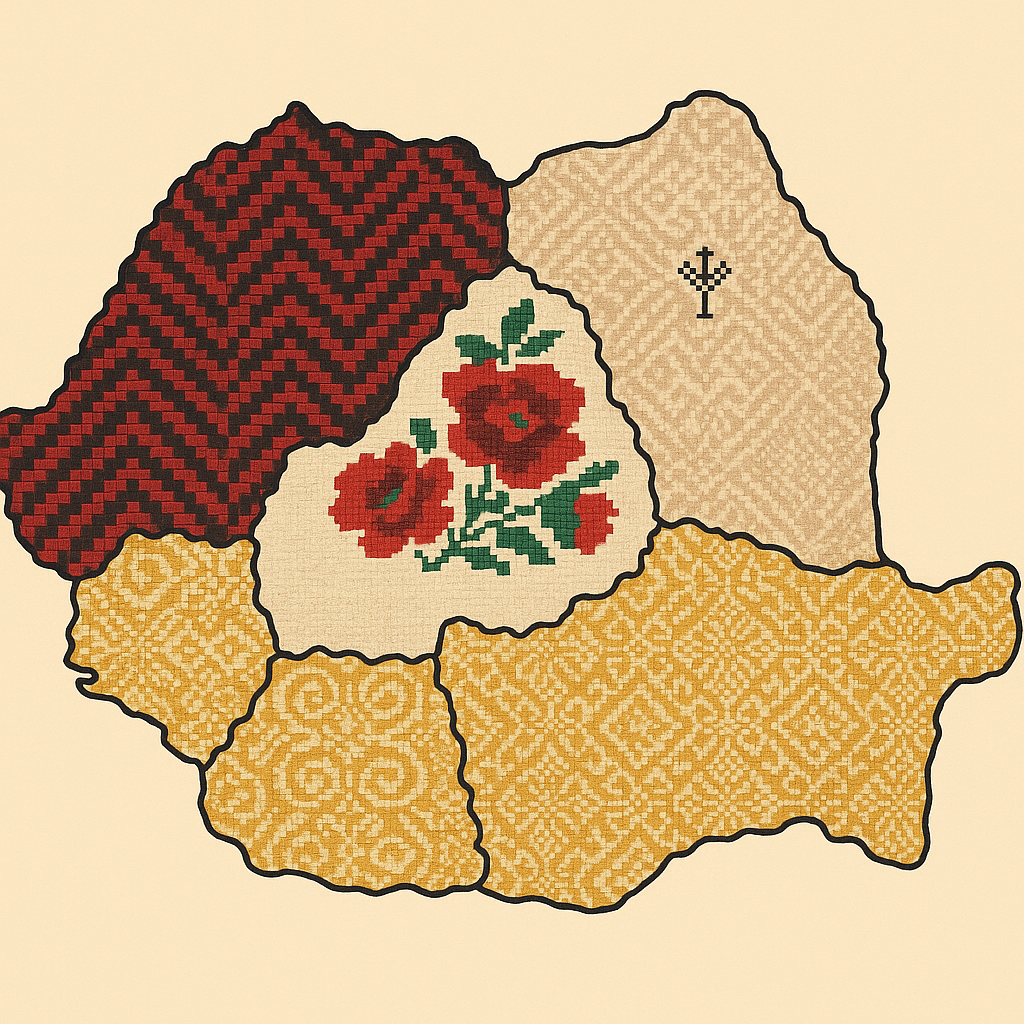
Map with embroidery patterns that are typical for each region of Romania. The patterns can still vary a lot on a local level.
Created with ChatGPT, based on information from Romanian Tour Store.
To say it’s just a piece of clothing is way too simple in this case. Especially in the past, it used to be a form of social connection for women. There were special gatherings, called ‘sezatori’ where women came to embroider, share the joys and the hardships of life and sing together. It was a community builder, where daughters learned from their mothers and passed through the tradition. Skill, uniqueness and creativity were valued in the embroidery.
It was a secretive process to make the ‘‘ie’’, as the women were protective over their designs. In special underground rooms the blouses were sewn, to prevent others from copying the unique and complex designs. It was a competition within communities for who could come up with the best patterns and designs. Sometimes women would copy their rivals’ designs made for a celebratory blouse onto an everyday blouse, to spite them. This would be such a great shame for the women that designed the pattern, that she would give away her original blouse.
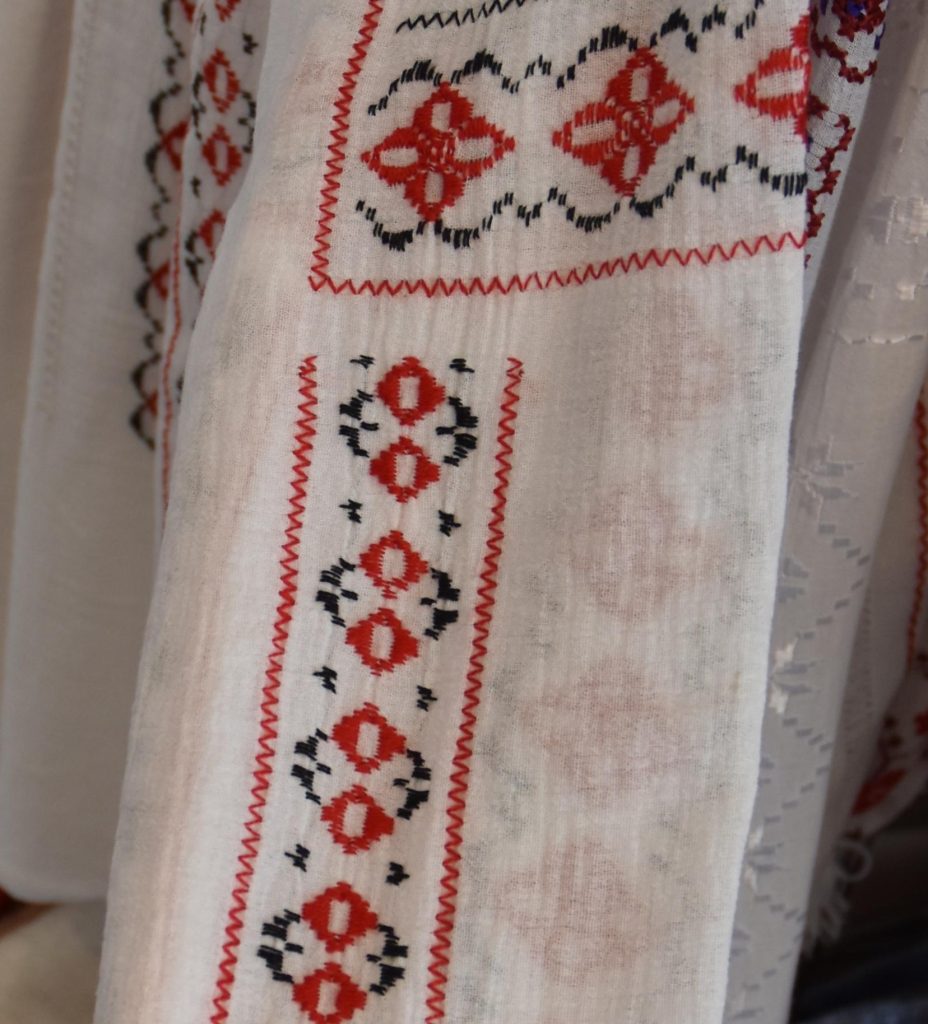
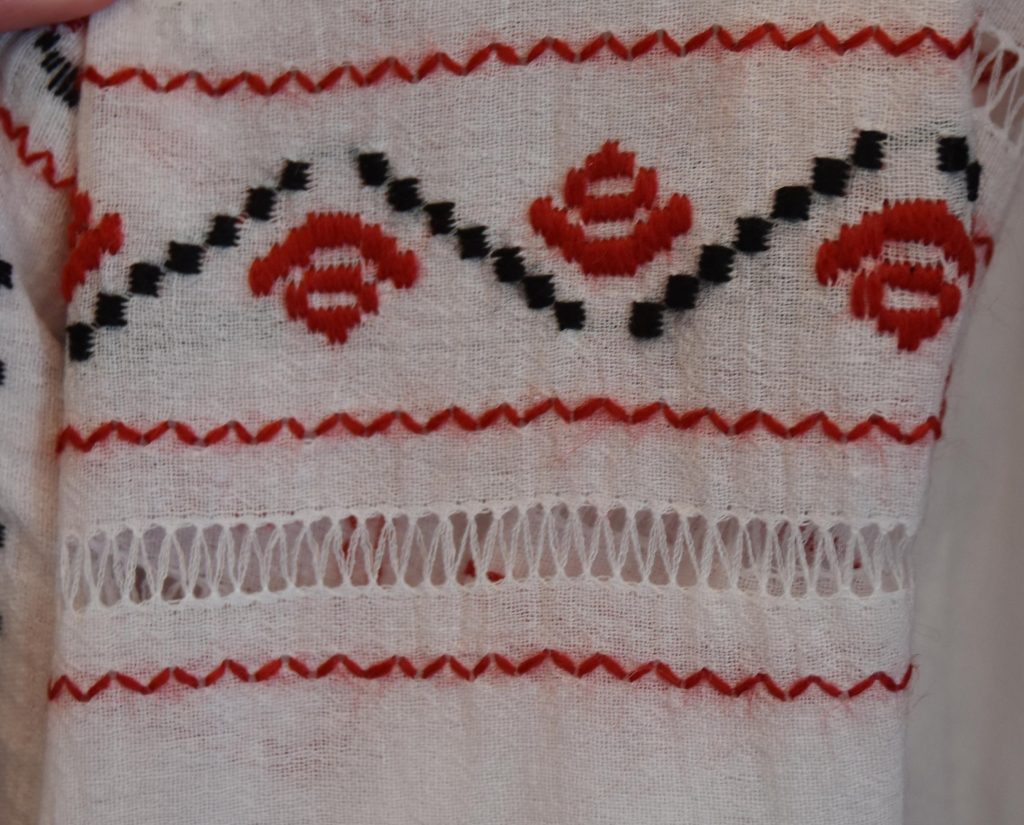

Patterns on Transylvanian ie’s
The cultural and communal significance of the ‘‘ie’’ is big and explains the strong reaction of Romanians when the blouse gained presence in the international fashion scene. Both in 2018 and last year cases came up between Romanians and big fashion brands that added the ‘‘ie’’ to their collection. In 2018, Fashion Network reports that Romanian designers and La Blouse Roumaine, an organisation that is founded to protect the blouse, called out Dior for copying their traditional clothing.
History repeats itself in the summer of 2024, when Romanian Insider reports that Romanian villagers faced down Louis Vuitton for ‘stealing’ the blouse with the pattern that is distinct to their region. Not only were they displeased to see that the pattern their community took years to create was taken as inspiration without any mention, they also felt mocked and offended that their traditional wear for special occasions was marketed as an airy, bohemian blouse for by the pool. Not to mention the cheaper copies that can be found on sweatshop brands like Shein, who sell similar blouses for as little as 13 euros.
Inspiration or appropriation?
The situation raises a question of cultural appropriation. The term cultural appropriation is used increasingly in public debate and refers to taking objects or elements from a minority culture and using it as your own, without crediting the original source. A lot can be said about the topic, as there is a thin line between cultural appropriation and simply taking inspiration. On one side, you can argue that the copying of traditional wear is appropriation due to the lack of acknowledgment and fair compensation for its origins. Big brands often fail to credit the original maker, causing no money to return to the poor communities and the traditions risks fading. Without mentioning the Romanian culture, you also erase the cultural context and reduce the deep meaning behind the ‘ie’ to a trend.

On the other hand, there is no copyright on the blouse and designers are free to use everything as a source of inspiration. The patterns vary so greatly between different parts of the country, that it is hard to give an outline on what is considered a real ‘ie’. The blouse has existed for centuries and it is hard to say who owns it. In an effort to protect the Romanian blouse, Romania awarded the garment a place on the UNESCO Representative List of Intangible Cultural Heritage in 2022. However, a place on the UNESCO list does not grant legal protection, it is more of a symbolic sign. It acknowledges the blouse as part of world heritage, promotes it as a national symbol and supports efforts to preserve traditional creation techniques.
The biggest clue to get out of this is the acknowledgement. Andreea Tanasescu is the founder of La Blouse Roumaine and started the International Day of the Romanian Blouse, on which she encourages people to wear the ‘‘ie’’. She mentions in an RadioFreeEurope article that she sees a positive side to the rising popularity of the garment. When shown and promoted in the right way, she sees a possibility for spreading the stories that are told through the embroideries. The popularity can keep the cultural heritage alive and show others the great history of the country. All, as long as the right Romanian inspiration sources are mentioned and credited.
As the international interest in the ‘‘ie’’ grows, its preservation and protection depend on how the world will treat it. Acknowledging its origins, supporting local artisans and educating consumers can help maintain the blouse’s cultural value. While global exposure can be a positive thing, it’s important that the communities behind the tradition get credit and have the opportunities to share the stories told through the blouse.
